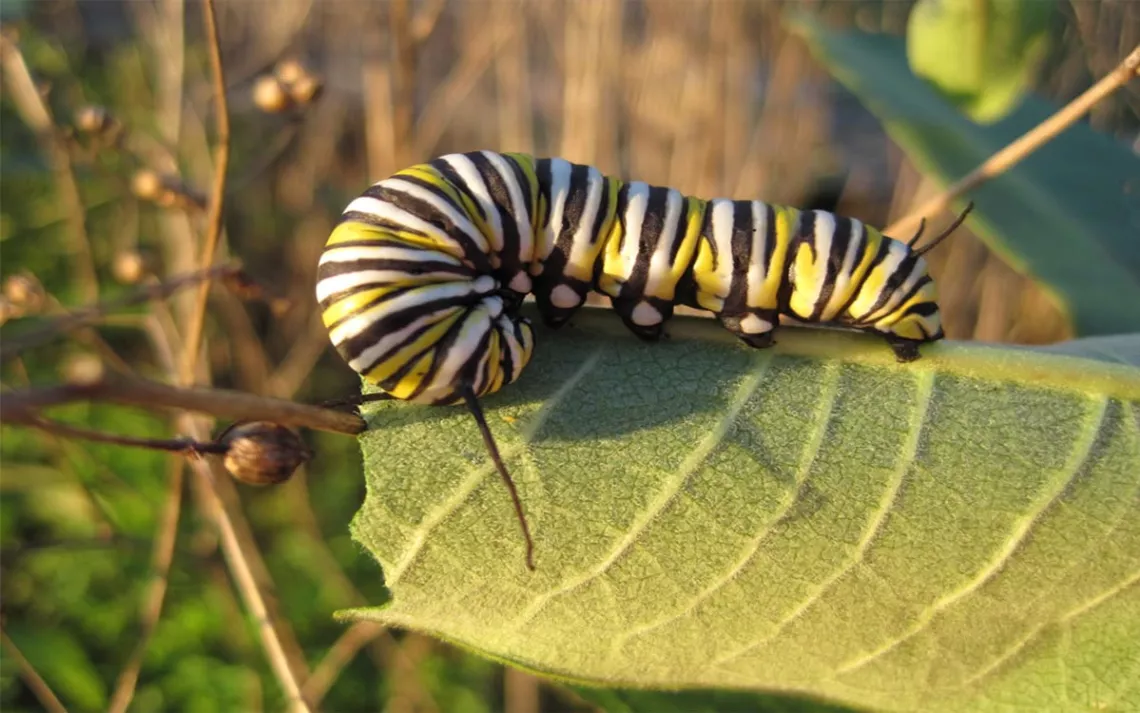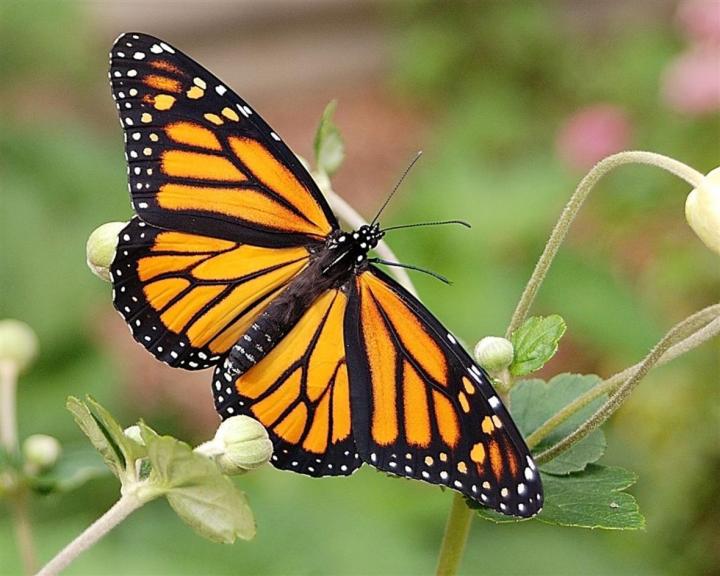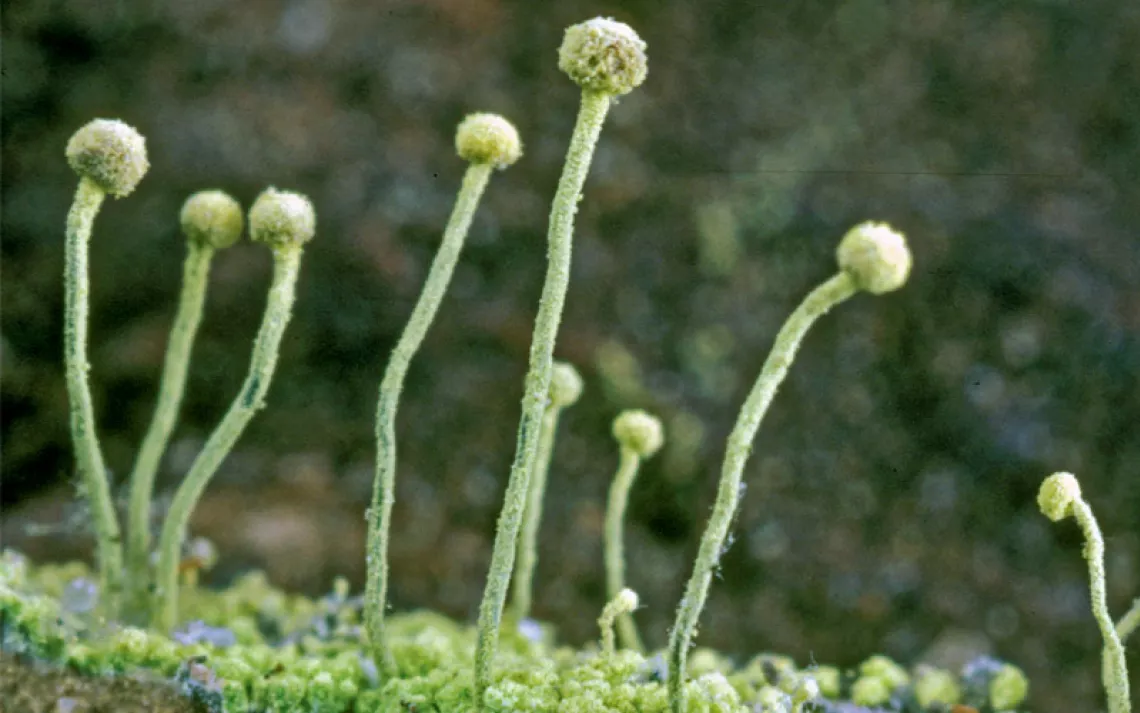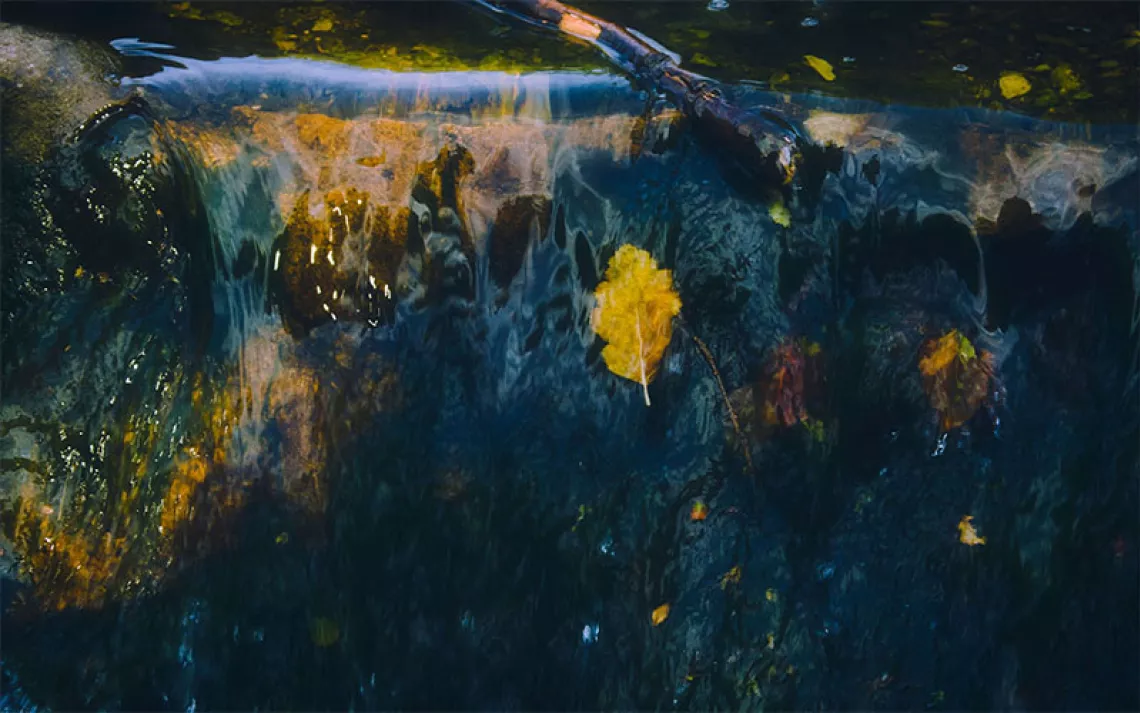Massive Milkweed Restoration Could Help Save the Monarch Butterfly
New analysis shows that to save the monarch, we need to restore agriculture land

Caterpillar on milkweed | Photo courtesy of USDA/David Taylo
Common milkweed isn’t a particularly finicky plant—it has “weed” in its name for a reason and can be found growing on roadsides, empty lots, and old fields. But over the last two decades, Asclepias syriaca, which is primarily found in the Midwest and eastern United States, has disappeared from most agricultural landscapes. Along with it, the population of the iconic migratory monarch butterfly, Danaus plexippus plexippus, which relies on the plant for reproduction, has also crashed, so much so that it is being considered for endangered status. Assuming the key to saving the monarch is bringing back milkweed, a new study in the journal Environmental Research Letters looks at exactly where conservationists need to plant Asclepias to revive the dwindling butterfly population.
According to researchers, 1.3 billion stems of milkweed have disappeared from Midwestern farmlands over the last 20 years. This has led to an 80 percent crash in the migratory monarch, which winters in the mountains of Mexico and breeds in the central and eastern United States during the spring and summer. Since hitting an estimated high of 682 million monarchs in 1997, the species dropped to just 42 million in 2015. According to another study, milkweed in and near cropland in Illinois, prime monarch habitat, has dropped by 95 percent over the same period—representing a 50 percent drop in the total milkweed population.
That’s believed to be caused by several factors. Farm policies including subsidies for ethanol and crop insurance payments have encouraged the cultivation of marginal cropland where milkweed used to flourish. A decrease in Conservation Reserve Program (CRP) payments has reduced incentives to keep some land out of cultivation. Aggressive mowing along roads by state and county transportation departments has also affected milkweed. But the introduction of herbicide-resistant corn and soybeans has led to truly dramatic decreases in the milkweed growing beside and within farm fields.
To investigate how to get more milkweed back into the landscape, the researchers looked at five types of land cover and evaluated how much milkweed each could hold. They analyzed protected lands, CRP lands, roadsides, agricultural land, and suburban and urban areas, consulting with experts to determine the milkweed stems per acre each land type could hold. They then created 218 scenarios for restoring milkweed to the landscape. They found that only 16 of those scenarios could introduce the 1.3 billion new stems of milkweed needed to stabilize populations of the ailing monarch.

Photo by Karen Oberhauser, University of Minnesota. Courtesy of Fred Ormand and Joyce Pearsall.
It turns out that while planting milkweed in urban and suburban areas and along roadways can definitely help, none of the 16 scenarios succeeded without the significant help of the agriculture community. In all the scenarios, at least half of marginal agriculture lands need to be converted into milkweed and monarch habitat to succeed. “Conservation land, protected grasslands, CRP lands, rights of way, urban and suburban planting—none of them alone can help us reach our goal,” says Wayne Thogmartin, a U.S. Geological Survey researcher and the lead author of the study. “It takes all these sectors working together. The main finding of our study is that an all-hands-on-deck approach could be essential to restoring the massive amounts of milkweeds needed to make the monarch population healthy again.”
Scott Black, executive director of the Xerces Society, a conservation group dedicated to protecting pollinators, says that getting the ag sector to change its policies and join that coalition will be tough. “This study really shows we’ve got a long way to go, and it’s not going to be easy. We need at least 6 million acres of high-quality pesticide-free milkweed habitat,” he says. “At a minimum, we need a conservation effort the same size as we made for the sage grouse. We’re spending $200 million for the sage grouse and only $10 or $12 million for monarchs. We need another order of magnitude.”
There are other efforts that need to be undertaken to save the monarch as well—and more studies. In fact, it’s not 100 percent clear that the decrease in milkweed is the sole or even primary driver of the decline, though many prominent researchers are confident in the link. The reserve in the mountains of Michoacán, Mexico, where the insects overwinter, has been hit by illegal logging and two harsh winter storms that impacted the hibernating Lepidoptera. It’s also possible that an unidentified disease or pesticide is affecting the monarchs, or that a decrease in flowering plants, on which they nectar while migrating, is also hurting the butterfly.
Even if milkweed turns out not to be the primary problem, restoring millions of acres of pesticide-free habitat full of native plants would still be a positive for the monarch and other imperiled pollinators. “I think whether you call them a tent pole or a keystone species, if done right, we can use monarchs to lead to the planting or restoration of diverse native landscapes,” says Black. “Helping monarchs will help other insects like bees and other butterflies where the same issues apply. It’s not just about milkweed, but about creating a flowering landscape protected from insecticides that give pollinators a place to nest.”
But none of that can happen without the cooperation of the agricultural community. While the current political climate doesn’t seem promising for the massive effort needed to restore monarch habitat, Thogmartin says there are opportunities for change. The possibility of an endangered-species listing might bring people to the table, and the renewal of the farm bill in 2019 is an opportunity to revisit the subsidies and programs that encourage the cultivation of the marginal land needed for habitat restoration. “The farm bill is a big portent of the agricultural landscape, and it will be interesting to see if they are willing to allow other things to exist there besides corn and soy,” Thogmartin says. “If we really care about monarchs and other associated ecosystem services, there’s going to be some really tough negotiations that have to happen.”
 The Magazine of The Sierra Club
The Magazine of The Sierra Club







